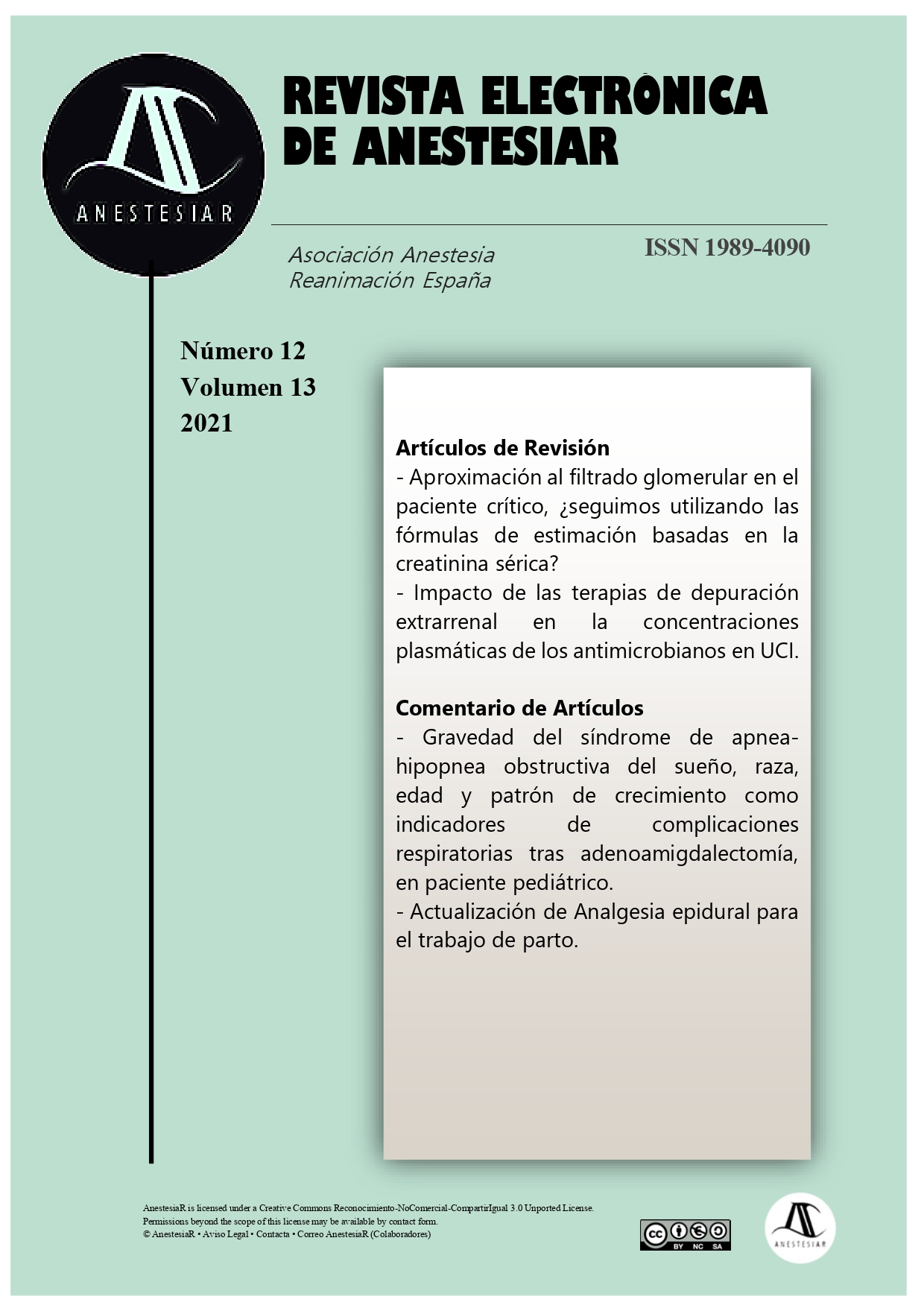Impact of extrarenal clearance therapies on antimicrobial plasma concentrations in the Intensive Care Unit
DOI:
https://doi.org/10.30445/rear.v13i12.992Keywords:
acute kidney injury, antimicrobials, continuous renal replacement therapy, extracorporeal clearanceAbstract
A careful management of antimicrobials is essential in the critically ill with acute kidney injury, especially if renal replacement therapy is required. Acute kidney injury may lead per se to clinically significant modifications of drugs’ pharmacokinetic parameters, and the need for renal replacement therapy represents a further variable that should be considered to avoid inappropriate antimicrobial therapy. In many cases, the extracorporeal removal of antimicrobials can be relevant, with a consistent risk of underdosing-related treatment failure and/or potential onset of bacterial resistance.
In this clinical scenario, the knowledge of the pharmacokinetic and pharmacodynamic properties of different antimicrobial classes is essential to adapt the doses and/or dosage ranges.
The purpose of this review is to present an updated summary of the current evidence for this phenomenon and to guide possible drug adjustment.
For the preparation of this document, a non-systematic review of articles indexed in MEDLINE (PubMed) from the last fifteen years has been carried out, updated in December 2019, using the keywords “critically ill”, “acute kidney injury”, “antimicrobials”, “continuous renal replacement therapy” and “extracorporeal clearance”.
References
- Manejo actual de las terapias continúas de reemplazo renal: Estudio epidemiológico multicéntrico. Med Intensiva. 2017;41(4):216-22.
- John S, Eckardt KU. Renal replacement strategies in the ICU. Chest 2007;132:1379-88.
- Ricci Z, Romagnoli S.Technical Complications of Continuous Renal Replacement Therapy. Contrib Nephrol. 2018;194:99-108.
- Pistolesi V, Morabito S, Di Mario F, Regolisti G, Cantarelli C, Fiaccadori E. A Guide to Understanding Antimicrobial Drug Dosing in Critically Ill Patients on Renal Replacement Therapy. Antimicrob Agents Chemother. 2019 Jul 25;63(8):e00583-19.
- Gimeno R, Ruiz-Ramos J. Pacientes con circuitos extracorpóreos en: Tratamiento diferencial en pacientes en situaciones especiales. Curso PROA para médicos intensivistas. Sociedad Española de Medicina Intensiva, Crítica y Unidades Coronarias (SEMICYUC). Grupo de trabajo de enfermedades infecciosas y sepsis (GTEIS) y Sociedad Española de Farmacia Hospitalaria (SEFH). Mayo 2019.
- Pea F, Viale P, Pavan F, Furlanut M. Pharmacokinetic considerations for antimicrobial therapy in patients receiving renal replacement therapy. Clin Pharmacokinet 2007; 46 (12): 997-1038.
- Heintz BH, Matzke GR, Dager WE. Antimicrobial dosing concepts and recommendations for critically ill adult patients receiving continuous renal replacement therapy or intermittent hemodialysis. Pharmacotherapy 2009 May;29(5):562-77.
- Echeverri J, Molano A. Ajuste de fármacos y nutrición en terapias de reemplazo renal continuo. Gac Med Mex. 2018; 154 (Supp 1): S48-S60.
- Maynar J, Sánchez-Izquierdo J.A. Dosificación de fármacos durante los tratamientos de depuración extracorpórea de la sangre. NefroPlus 2010;3(3):20-26.
- Schetz M. Drug dosing in continuous renal replacement therapy: general rules. Curr Opin Crit Care. 2007 Dec;13(6):645-51.
Downloads
Published
How to Cite
Issue
Section
License
Copyright (c) 2022 Revista Electrónica AnestesiaR

This work is licensed under a Creative Commons Attribution-ShareAlike 4.0 International License.
 Envío y derechos de autor
Envío y derechos de autor


 Revista Electrónica AnestesiaR by
Revista Electrónica AnestesiaR by 